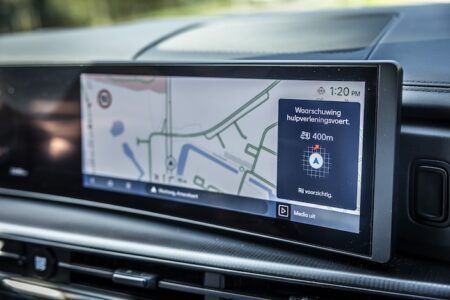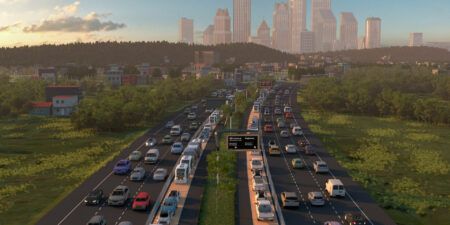The US Department of Transportation (USDOT) presented the latest updates of its ongoing, multi-city Connected Vehicle (CV) Pilot Deployment Program at the 25th ITS World Congress yesterday (September 19) – and revealed to the well-attended session some of the elements that have not worked and the lessons learned from this.
The session, at the Bella Center in Copenhagen, Denmark, was chaired by Kenneth M Leonard (above), director of the USDOT Intelligent Transportation Systems Joint Program Office. It brought together leading figures involved at each of the three pilot sites, New York City (NYC), Tampa, Florida, and Wyoming – selected by the USDOT to be part of its Connected Vehicle Pilot Deployment Program.
Lessons from Tampa
The Tampa Bay site is unique in being the only one allowing volunteer local residents to experience CV technology installed in their own private vehicles. Once equipped, the vehicles can communicate with traffic signals in downtown Tampa and with each other, helping to prevent crashes and keep traffic moving.
The Tampa Hillsborough Expressway Authority (THEA) has already equipped 10 buses, 10 streetcars and more than 500 participant cars with CV equipment for the pilot. THEA’s planning director, Bob Frey (left), shared with session attendees the things they would’ve done differently if they knew at the start of the project what they do now.
One of the most important lessons related to involvement with businesses.
Frey said, “When you try to do this as a municipality, you’re going to have a lot of people tell you that their technology is ready to go right now – do not believe them. You’re going to have to put a lot of time and effort into it, but the benefits are there.”
Frey also warned session attendees to be careful about the language they use when working with external parties, saying, “The vocabulary between organizations don’t always match. One of our applications is called curve speed warning and we went six months back and forth with the car manufacturers because they said we couldn’t do it and we were trying to figure out why.
“It turned out that curve speed warning meant something else to them so we renamed it ‘end of ramp deceleration’ and they were good with that. If we’d known that before, it could’ve been resolved in three hours and saved us six months of hassle.”
NYC: Largest CV deployment in USA
With hardware installed in 8,000 vehicles, the NYC site is currently the largest deployment of CVs in the USA, as the city seeks to meet its Vision Zero goal of eliminating traffic-related injuries and fatalities by 2024.
Over 350 intersections in Manhattan and Brooklyn have been equipped with roadside units (RSU) that broadcast warning messages to equipped vehicles enabling ultra-fast vehicle-to-vehicle (V2V) and vehicle-to-infrastructure (V2I) communication of safety and mobility-related messages, such as warnings for sudden braking ahead, red-light violations, speed violations, and vehicles turning in front of buses.
ITS New York’s director of system engineering, Mohamad Talas (above) explained how the NYC team overcame transmission issues specific to the area. “From the beginning of the project,” he said, “we needed to address the most difficult area, the CBD (Central Business District) in Midtown Manhattan. The technology we are using is dependent on GPS for location identification area, and it works in some areas but not in others. So we decided to use RSU triangulation where the RSU is used as a signal landmark, the vehicle can pick up the transmission and provide much more accurate location data.”
Wyoming project
During phase one in 2016, Wyoming DOT (WYDOT) and its partners planned the project. Phase two saw it installing onboard communication devices on 100 of the department’s vehicles, including snow plows and patrol vehicles, and about 75 roadside units (RSUs) on and around I-80.
During phase three, starting this month, WYDOT will equip about 300 commercial trucks with the technology, and once completed, the parties will evaluate the research to determine if the technology is beneficial. Kevin Gay, team lead for policy and tech transfer at the ITS Joint Program Office, was speaking on behalf of the WYDOT site.




